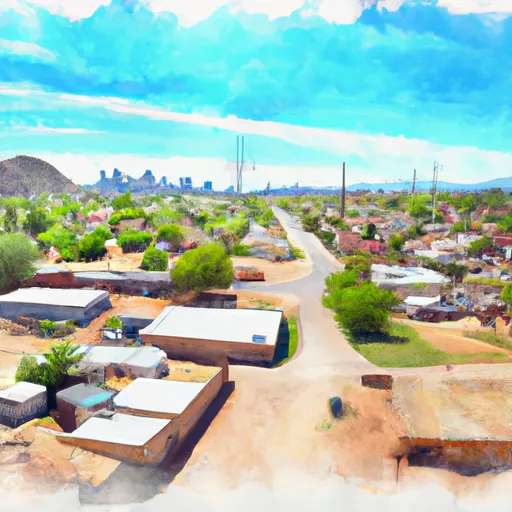-
 Snoflo Premium
Snoflo Premium
Get unlimited access to all our content
With no Ad interruptions! - Start Your Free Trial Login with existing account
Topawa
Eden Index
Climate
8.8
•
Recreation
1.1
•
Community
•
Safeguard
3.9/10

Topawa, Arizona is a small rural community located in the southwestern part of the state. The climate in Topawa is characterized as a hot desert climate with long, scorching summers and mild winters. Summers often experience high temperatures exceeding 100 degrees Fahrenheit, while winters see average temperatures ranging from the 50s to 70s. Precipitation is scarce, with an average annual rainfall of around 12 inches.
Hydrologically, Topawa is situated in the Sonoran Desert region, which is known for its aridity and limited water resources. The area is primarily dependent on groundwater sources for its water supply.
Despite the challenging climate and hydrology, there are several outdoor recreation opportunities available in and around Topawa. The beautiful Sonoran Desert landscape offers opportunities for hiking, birdwatching, and exploring the unique flora and fauna of the region. Nearby national parks and recreational areas, such as Saguaro National Park and Organ Pipe Cactus National Monument, provide further opportunities for outdoor enthusiasts to enjoy activities like camping, backpacking, and wildlife viewing.
What is the Eden Index?
The Snoflo Eden Index serves as a comprehensive rating system for regions, evaluating their desirability through a holistic assessment of climate health, outdoor recreation opportunities, and natural disaster risk, acknowledging the profound impact of these factors on livability and well-being.
Climate Health Indicator (CHI): 8.8
Topawa receives approximately
342mm of rain per year,
with humidity levels near 47%
and air temperatures averaging around
20°C.
Topawa has a plant hardyness factor of
9, meaning
plants and agriculture in this region tend to thrive here all year round.
By considering the ideal temperature range, reliable water supplies, clean air, and stable seasonal rain or snowpacks, the Climate Health Indicator (CHI) underscores the significance of a healthy climate as the foundation for quality living.
A healthy climate is paramount for ensuring a high quality of life and livability in a region, fostering both physical well-being and environmental harmony. This can be characterized by ideal temperatures, reliable access to water supplies, clean air, and consistent seasonal rain or snowpacks.
Weather Forecast
Streamflow Conditions
Rio Sonoyta
Area Rivers
Rio Sonoyta
Snowpack Depths
Rio Sonoyta
Reservoir Storage Capacity
Rio Sonoyta
Groundwater Levels
Recreational Opportunity Index (ROI): 1.1
The Recreational Opportunity Index (ROI) recognizes the value of outdoor recreational options, such as parks, hiking trails, camping sites, and fishing spots, while acknowledging that climate plays a pivotal role in ensuring the comfort and consistency of these experiences.
Access to outdoor recreational opportunities, encompassing activities such as parks, hiking, camping, and fishing, is crucial for overall well-being, and the climate plays a pivotal role in enabling and enhancing these experiences, ensuring that individuals can engage in nature-based activities comfortably and consistently.
Nearby Ski Areas
Catastrophe Safeguard Index (CSI):
The Catastrophe Safeguard Index (CSI) recognizes that natural disaster risk, encompassing floods, fires, hurricanes, and tornadoes, can drastically affect safety and the overall appeal of an area.
The level of natural disaster risk in a region significantly affects safety and the overall livability, with climate change amplifying these risks by potentially increasing the frequency and intensity of events like floods, fires, hurricanes, and tornadoes, thereby posing substantial challenges to community resilience and well-being.
Community Resilience Indicator (CRI):
The Community Resilience Indicator (CRI) recognizes that education, healthcare, and socioeconomics are crucial to the well-being of a region. The CRI acknowledges the profound impact of these elements on residents' overall quality of life. By evaluating educational resources, healthcare accessibility, and economic inclusivity, the index captures the essential aspects that contribute to a thriving community, fostering resident satisfaction, equity, and social cohesion.

